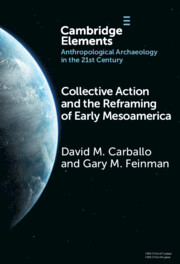Element contents
Collective Action and the Reframing of Early Mesoamerica
Published online by Cambridge University Press: 11 January 2024
Summary
- Type
- Element
- Information
- Online ISBN: 9781009338677Publisher: Cambridge University PressPrint publication: 22 February 2024
References
- 5
- Cited by

